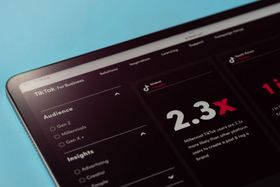Micro vs. Macro Conversions: Formula, Examples, & Use Cases
Published October 11, 2022

Conversion rate optimization (CRO) is the process of increasing the percentage of conversions on your website. Why would you want to optimize conversions? As your conversion rates increase, so does your bottom line because it generates ideas for improving various elements within your website, which will improve your website's performance in turn. You can validate the improvements using A/B testing and multivariate testing. Just remember, you must choose the correct conversion metrics—those that suit your specific business.
» Want to increase your conversion rates? Follow this easy guide
Micro vs. Macro Conversions
A micro conversion is the completion of secondary actions by a user that indicates that they're likely to convert. This is not generally considered in a website's overall conversion rate, but it does tell you how well your sales funnel is working. Some examples of micro conversions include adding a product to a shopping cart, proceeding to checkout, and providing an email address.
A macro conversion is a primary conversion on a website. This includes when a sale is successfully completed as well as a completed lead generation form.
You should only choose one or two macro goals, while you can have as many micro goals as you see fit. If you have too many macro goals, your business objective won't be clear and your macro conversion rate will be diluted.
There are various formulas that you can use to calculate your conversion rate. This is the formula we will use for our example:
Total number of conversions / Total number of sessions X 100
Other formulas replace "total number of sessions" with "total number of leads" or "total number of visitors". The version you decide to use will depend on what you define as your conversion event and how you plan to measure your traffic.
Common Examples
Selecting the right macro and micro goals can give you valuable nuggets of information that accurately pinpoint the strengths and weaknesses of your e-commerce website.
Macro Goals
- Signing up for a newsletter: brick-and-mortar stores
- Finalizing a sale: e-commerce stores
- Creating an account: social networks
- Requesting a demo: SaaS companies
- Following a sponsored link: affiliate sites
Micro Goals
- Watching a video: fitness industry
- Adding to a wish list: e-commerce stores
- Adding to a shopping cart: e-commerce stores
- Browsing a defined number of products: e-commerce stores
- Scrolling down a page: brick and mortar stores
- Liking or upvoting: social networks
- Navigating through a catalog: e-commerce
- Executing a product search: e-commerce
- Clicking on a search result: e-commerce
- Creating an account: social networks
Respective Use Cases
Let's look at an example scenario so that you can get a better understanding of how these conversions work as a team. Our chosen business is an e-commerce store that sells sports equipment for the fitness fanatic.
Macro Conversions
Macro conversions are used to calculate the overall conversion rate of your website. In the case of the fitness e-commerce store, macro conversions would be:
- Sale of a product
- Signing up for the referral program
Micro Conversions
Micro conversions are used for conducting a funnel analysis. This will help you to understand where your users are dropping off on their path to macro conversions. Micro conversions will also help to identify opportunities to improve your macro conversion rate. In the case of the fitness e-commerce store, micro conversions would be:
- Navigating to the store's homepage
- Page visits for each page
- Clicking on a fitness product to get more detailed information about it
- Clicking on social media navigation
- Signing up for marketing emails or for the rewards program
- Using the online store's search function
- Watching videos explaining how to operate equipment correctly or offering nutritional advice
- Adding a product to the wish list or to the cart
- Adding delivery details or banking details
- Writing a review of a fitness product
As you can see, the micro goals start at the homepage and end when a product has been bought and reviewed. The order is important because it will tell you where customers are dropping off, where there is a lot of traffic, and where traffic is low. You can use this information to optimize your online store.
» Can you improve your sales funnel? Discover how to manage your micro and macro goals in Google Analytics 4
Conclusion
It's really important to understand the difference between macro and micro conversions. To get the maximum benefit out of these metrics, they need to be defined so that they complement each other. Don't underestimate the power of clearly selected and defined macro and micro goals, otherwise you may spend your time chasing after a goal that's not beneficial for you.







